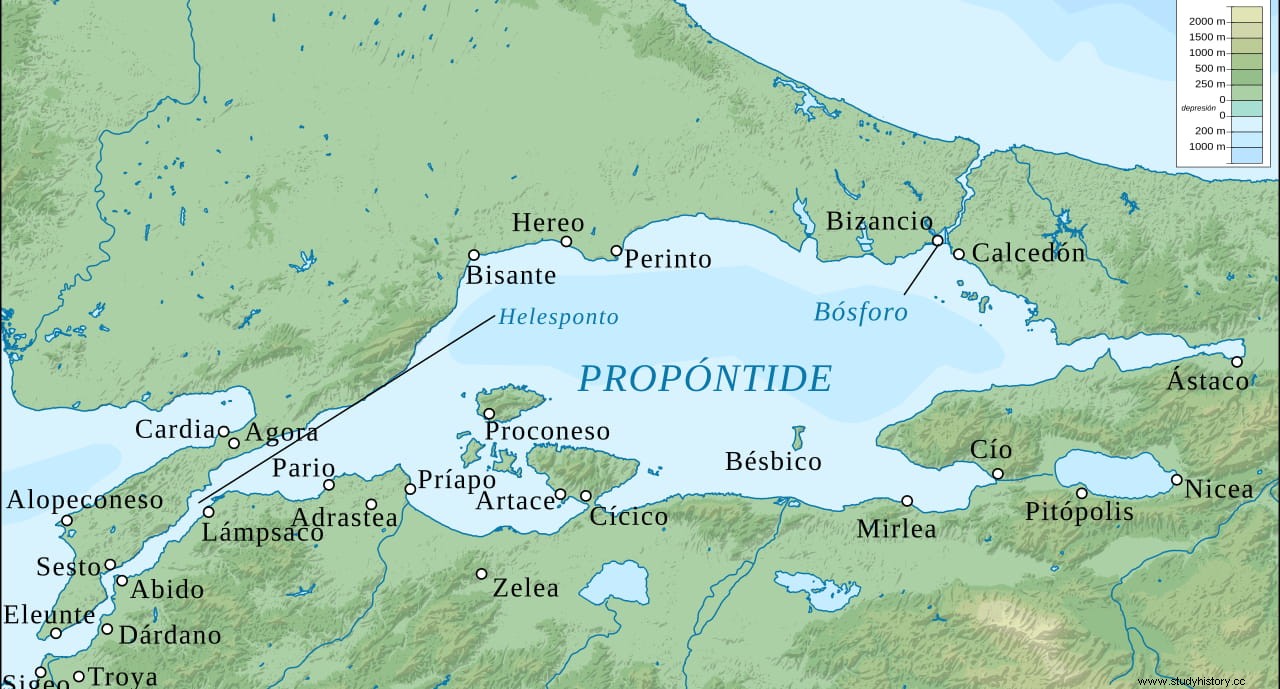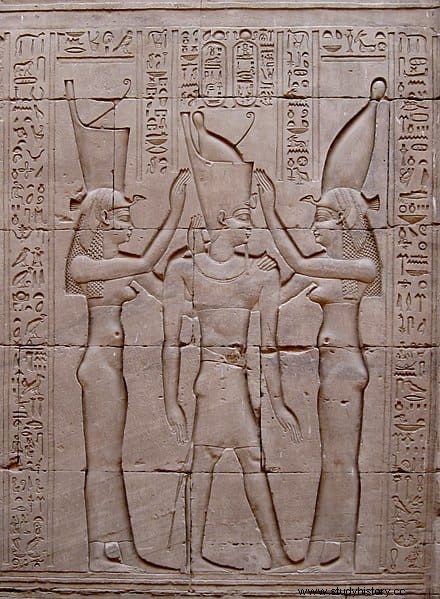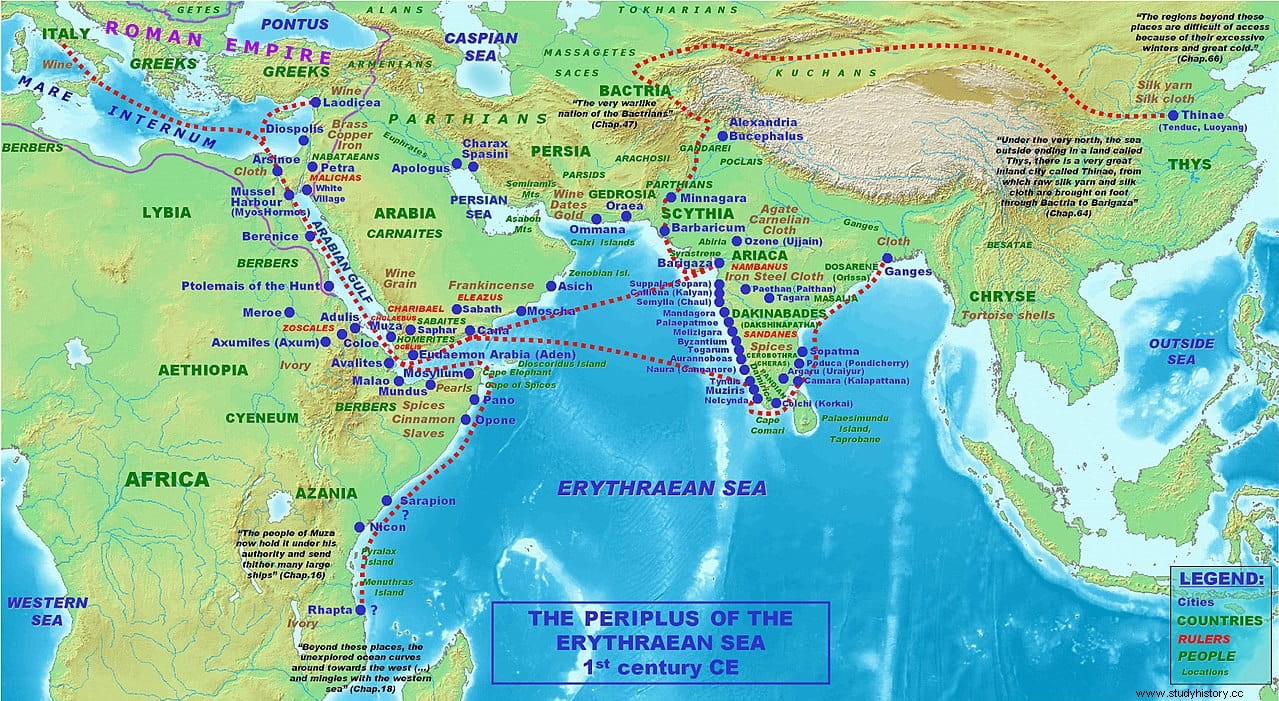Although its great emergence took place in the 16th century, the desire to travel the known world and discover new lands was something that already existed in Antiquity and that is why we have news of daring navigators who traveled unknown seas and found places far removed from their ports of departure. Here we have already seen some such as the Punic Hannón and Himilcón, the Egyptian Henenu or the Greek Piteas. Helenus was also the one we are going to see today, Eudoxus of Cyzicus (not to be confused with his namesake of Cnidus, Plato's pupil), who is believed to have reached India and tried to circumnavigate Africa.
Cyzicus was a city in Asian Greece, the coastal area of Anatolia (present-day Turkey) where numerous cities of Hellenic culture such as Ephesus, Miletus, Samos, Halicarnassus, etc. developed. They were spread over several regions (Aeolis, Ionia, Dorida...) and Cycicus was located in a somewhat special one in the northwest called Mysia, which extended along the southern coast of the Propontis or Sea of Marmara, that body of water that serves as a connection between the Aegean and Black seas through the Bosphorus and the Dardanelles. It is easy to deduce that it was a real meeting point for civilizations and trade relations, which is why it became rich.

The one that was born as a colony of Miletus would pass through Athenian, Persian, Spartan, Macedonian, Pontic and Roman hands. Eudoxus was born around 150 B.C., when Cyzicus was under the influence of the Ptolemaic dynasty, which had ruled Egypt since that country was assigned to General Ptolemy Soter in the distribution agreed to make peace between the Diadochi who were at war for staying with the empire of Alexander the Great. Little is known about the life of Eudoxus until he made the aforementioned trips, already in middle age. Apparently, he arrived in Alexandria as an ambassador and herald during the reign of Ptolemy VIII, a Greco-Egyptian king who adopted the nickname of Evérgetes (Benefactor) in honor of his ancestor Ptolemy III, although in reality he was nicknamed Fiscón (Paunchy) due to his obesity.
With such a nickname it is inferred that Ptolemy VIII was not a popular monarch and, certainly, he unleashed a persecution against all his detractors, especially the Jews and the intellectuals of Alexandria, the main opposition center, expelling from the kingdom sages, teachers, philosophers, artists, doctors, musicians… A cultural tragedy that led to a rebellion and subsequent civil war, in which the king prevailed but without being able to put an end to the instability of the situation, something that Rome set out to take advantage of to take over the country; He did it in 116 BC, shortly after Ptolemy died. Despite this bleak picture, it is ironic that such a president was about to have sponsored what could be one of the most important trips in history.

Actually, we do not have much information, neither in quantity nor in variety of sources. Everything we know about that company comes from the work Geography that Strabo, the famous Greek historian and geographer, wrote a century and a quarter later, around the year 29 AD. To do this, he based himself on the story of his predecessor, Posidonius, another scholar who had also traveled throughout the Mediterranean and according to which in 118 B.C. a sailor from India was shipwrecked in the Red Sea and brought before Ptolemy, with whom he agreed to lead a trading expedition to his country. The king appointed Eudoxus to do this, who during his stay in Egypt had shown great interest in going up the Nile and other scientific issues.
It is curious that Strabo considered the story narrated by Posidonius doubtful because today, although there are many equally skeptical historians and mariners, there are also those who do see it as credible. After all, in the 2nd century BC, the Red Sea was an important area of maritime routes and some of its ports, such as Eudaemon (current Aden, in Yemen) brought together merchants not only from the so-called Arabia Felix (Happy Arabia, one of the regions into which the Arabian Peninsula was divided and the most prosperous), but also from Egypt, Greece and India. It was, therefore, an intermediate point and, therefore, highly appreciated, hence the attraction that it would have as a basis for piracy. And it is that later, when nautical advances allowed sailing directly from Africa to Asia, Eudaemon declined and new business niches were sought. But first, the sailors had to follow a cabotage itinerary, parallel to the coast, until there, and that was what Eudoxus did.

From there, the Indian sailor entered the fray, because to make the second part of the journey it was necessary to know the monsoon winds that blew in the Indian Ocean. The Indians routinely used them to reach the Arabian Peninsula; On the other hand, Western sailors did not need them to reach it and they did not usually go there (although they knew about them from the trip that Nearchus, Alexander's admiral, made through the mouths of the Tigris and the Euphrates). Thus, following the instructions of that castaway -whose name has not transpired-, they moved away from land and successfully completed the voyage, although it is not known which port they arrived at. Eudoxus returned with a rich shipment of precious stones and perfumes... which Ptolemy seized from him because at that time the crown had a monopoly on the trade and distribution of these products.
The route was open and since then it has become increasingly busy. In fact, in the work Periplo del Mar Eritreo , composed in the second half of the 1st century AD. by an anonymous author, the Greek Hippalus is identified as the discoverer of this itinerary, although Pliny the Elder he says that what he discovered was the monsoon wind that bears his name, which has led others to suppose that he may have been a member of Eudoxus's expedition. This would still be the protagonist of a second adventure, even more ambitious than the previous one, which he began after a new trip to India commissioned by the widow Cleopatra III, regent during the minority of the heir, Ptolemy IX. This time Eudoxus made sure he had permission to trade and got an even more splendid shipment than the other.

He was returning, then, when a strong wind - the unusual Northeast monsoon - blew his ship away from the Gulf of Aden, pushing it towards the southeast coast of Africa, beyond Ethiopia. There, approaching an unmarked beach to stock up, he discovered the remains of a shipwreck with a figurehead in the shape of a horse. The indigenous people, whom he won over by giving them many products, told him that this ship had arrived from the south and, due to the characteristics of the wreck (including the figurehead in the shape of a horse's head), the navigator considered that it was a Phoenician ship from Gades (Hispanic Cádiz), a city born from the Punic colony Gádir. Although at that time it was already under Roman control, this town was also known as Eritrea, because its Tyrian founders considered themselves to come from the aforementioned Eritrean Sea or Red Sea.
Eudoxus then decided that when he returned, he would try to follow the frustrated route of that ill-fated ship. So it was. Once his trip ended and after being plundered again by the pharaoh -Cleopatra III had already given way to Ptolemy IX-, in Alexandria they confirmed that the Phoenician fishermen of Hispania used to decorate their cabotage boats with masks of horses -hence the they were called hippoi – and they went down to fish to the river Lixo (Larache). So it occurred to him that he could circumnavigate Africa to reach India without going through Egypt, avoiding the risk of losing his profits at the hands of their rulers, thus prefiguring what the Portuguese would do a millennium and a half later.

He moved to Gades and, as he grew rich along the way without us knowing exactly how, chartered a ship and two smaller boats, hired a crew and set sail, passing the Pillars of Hercules and descending the African Atlantic coast, somewhat following the the same course that the Carthaginian Hanno would have taken centuries before (the exact date is unknown and some date it shortly before the First Punic War while others go back to the year 470 B.C. and some even further back, around 510 or 509 BC). In this regard, it is worth remembering the Egyptian-Phoenician expedition sent between 610 and 594 BC. by Pharaoh Necao II to go around Libya (the name given to Africa at the time) in the opposite direction, as Herodotus recounted.
Eudoxus failed. At first he tried to sail away from the coast to avoid accidents but the crew, fearful of losing sight of land, threatened to mutiny and he had to give in. As feared, they ran aground and were forced to build a new ship with the woodwork of the victim, continuing the circumnavigation. The problems accumulated in such a way - he learned of a plot to abandon him on an island - that at what he called Bogo, probably in Mauritania, he landed, sold the ship and returned to Hispania through the Roman province.
But he was not discouraged and wanted to try it one more time, acquiring for it a round merchant ship and a Pentecontera (a ship with fifty oarsmen), so that one sailed out to sea and the other near the coast. Likewise, he carried tools for agriculture, artists, musicians and even puellae gaditanae dance experts because he planned to spend the winter on an island that he had discovered and that has not been identified, although there are those who point to the Azores. This attempt was the second and definitive one because the account of Strabo -and that of Posidonius, it follows- is interrupted and unfinished. That Greek was never heard from again, and therefore it was not known whether he had succeeded; Pliny the Elder I thought so but there is no evidence to support it, so it is likely that he perished in the effort, like so many other visionary pioneers.
